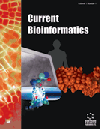
Full text loading...
The wide application of artificial intelligence in various fields has shown its potential to aid medical diagnosis. Ultrasound is an important tool used to evaluate fetal development and diagnose fetal diseases.
However, traditional diagnostic methods are time-consuming and laborious. Therefore, we constructed an end-to-end automatic diagnosis system based on convolutional neural networks using ensemble learning to improve the robustness and accuracy of the system.
The system classifies the ultrasound image dataset into six categories, namely, abdomen, brain, femur, thorax, maternal cervix, and other planes.
After experiments, the results showed that the proposed end-to-end system can considerably improve the detection accuracy of the standard plane.

Article metrics loading...

Full text loading...
References


Data & Media loading...

